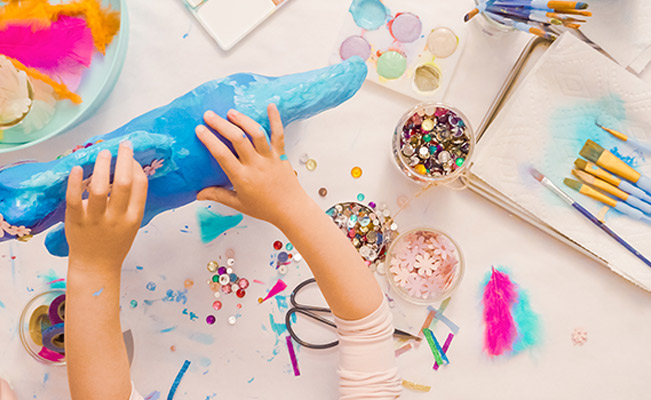
Learning should be fun especially for children with their bursting energy and impressionable minds. It should be like their favorite activity: play. It then begs the question of how to make learning fun?
Joanne Oppenheim, an award-winning author of over 50 children’s books, says play is educational. She explains that learning stops the minute play is no longer fun1.
Hence, this is why games help children learn better. Parents and teachers should know how to make learning fun. For instance, teaching a lesson based on a story and including a challenge can boost learning in children2.
Mary Muhs, dean of the Rasmusen School of Education, stresses the value of building literacy among preschoolers. This is done not only by teaching them how to read and write, but also by showing them how to love reading and writing at their own pace. And this can only be done if parents and teachers know how to make learning fun.
Neurologist and educator Judy Willis’ book, Research-Based Strategies to Ignite Student Learning: Insights from a Neurologist and Classroom Teacher (ASCD, 2016) reveals that “aha” moments” occur when students, regardless of age, show that “kindergarten enthusiasm” of enjoying learning every day3.
How to Make Learning Fun?
There are many ways to go about this. Let's take a closer look at what they are:
- How to make learning fun tip #1: Point out how your ideas connect to real life
Show your child how closely connected learning is to everything in the surrounding. You may find a caterpillar and talk about life cycles. Wandering outside the garden, you can talk about the environment, how plants make their food, or the basics of different states of matter (air, liquid, gas, plasma) and these can serve as the answers to your question of ‘how to make learning fun.’ Now that the rainy season is here, grab the chance to discuss the water cycle and cloud formation. Let your kid know why we should conserve water4. This will show your child how learning can be fun.
- How to make learning fun tip #2: Turn each entertaining activity into a chance to learn5
Limit the number of crayons on the table to teach the child to say please while asking for more crayons, or wait until another sibling is done with the art project. Additionally, you can turn group activities like freeze dancing, hide-and-seek and others, into opportunities to learn the value of cooperation and sportsmanship. Show your child how to make learning fun by playing bingo and identifying letters and numbers printed on the card.
- How to make learning fun tip #3: Tap all kinds of intelligences
Harvard professor Dr. Howard Gardner’s theory of multiple intelligence says people have eight different kinds of intelligence: verbal-linguistic, logical-mathematical, visual-spatial, musical, naturalistic, bodily-kinesthetic, interpersonal and intrapersonal6.
Find out which one applies to your child and think of how to make learning fun. Does your child have musical intelligence? Create a song about numbers, letters, or colors. Does he or she excel in visual-spatial skills? Draw pictures about parts of the body, different animals, flowers or a clock to learn about telling time. Is your kid into body-kinesthetic activities? Introduce the concept of numbers by holding your child’s hand and counting the steps as you go up and down the stairs at home. This way, you teach your child how to make learning fun.
- How to make learning fun tip #4: Use technology7
Children easily embrace technology. Take your child on virtual reality field trips inside the human body or the ocean. ‘Visit’ the Grand Canyon, Boracay, The Hundred Islands and other tourist spots and discuss natural rock formations, bodies of water, the nature of islands, etc. This will also develop an appreciation of nature, which is why it makes our list of tips on how to make learning fun.
- How to make learning fun tip #5: Tap the power of touc h
Let your child touch and feel objects. For example, you can collect rocks, wash them thoroughly, and have your kid paint upper and lowercase letters on each side8. You can show photos of simple objects like a bed, the sun or the moon and have your child try spelling out the word by combining the rocks with painted letters.
Additionally, you can turn on the faucet and let your child feel the running water underneath it. Show how water can be used to clean the hands and even the surroundings. The love for learning is a precious legacy you can pass on to your child while you still can. It is a memory that could last a lifetime. Enriching their world through learning can be carried over until their adulthood. Instill this habit of how to make learning fun and they will likely grow into passionate adults.
Be part of Club Mama today to unlock a world of privileges and benefits which include free samples, exclusive vouchers, promotions, expert advice and many more!
References:
1 Why Use Games to Teach? (n.d.) Retrieved Aug. 18, 2020 from https://serc.carleton.edu/introgeo/games/whygames.html
2 Why Use Games to Teach? (n.d.) Retrieved Aug. 18, 2020 from https://serc.carleton.edu/introgeo/games/whygames.html
3 Refuse to be a Boring Teacher (Oct. 10, 2015) Retrieved Aug. 18, 2020 from https://www.opencolleges.edu.au/informed/features/refuse-to-be-a-boring…
4 What can you do to make learning fun and engaging? (March 27, 2019) Retrieved Aug. 18, 2020 from https://www.classcraft.com/blog/features/ways-to-make-learning-fun/
5 A Twist on Teaching: Making Learning Fun and Effective (Part 1) (n.d.) Retrieved Aug. 18, 2020 from https://www.teamabi.com/a-twist-on-teaching-making-learning-fun-and-eff…
6 Multiple Intelligences: What Does the Research Say? (March 8, 2013) Retrieved Aug. 18, 2020 from https://www.edutopia.org/multiple-intelligences-research
7 What Can You Do to Make Learning Fun and Engaging? (March 27, 2019) Retrieved Aug. 18, 2020 from https://www.classcraft.com/blog/features/ways-to-make-learning-fun/
8 15 Literacy Activities for Preschoolers (Jan. 18, 2016) Retrieved Aug. 18, 2020 from https://www.rasmussen.edu/degrees/education/blog/literacy-activities-fo…


